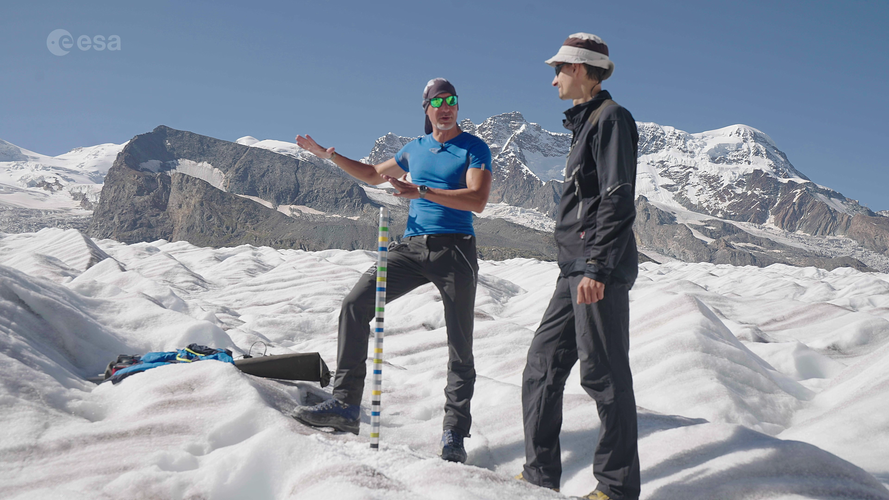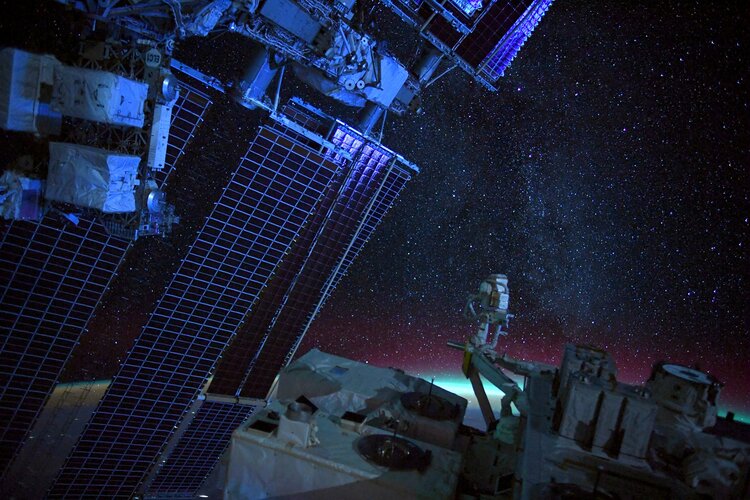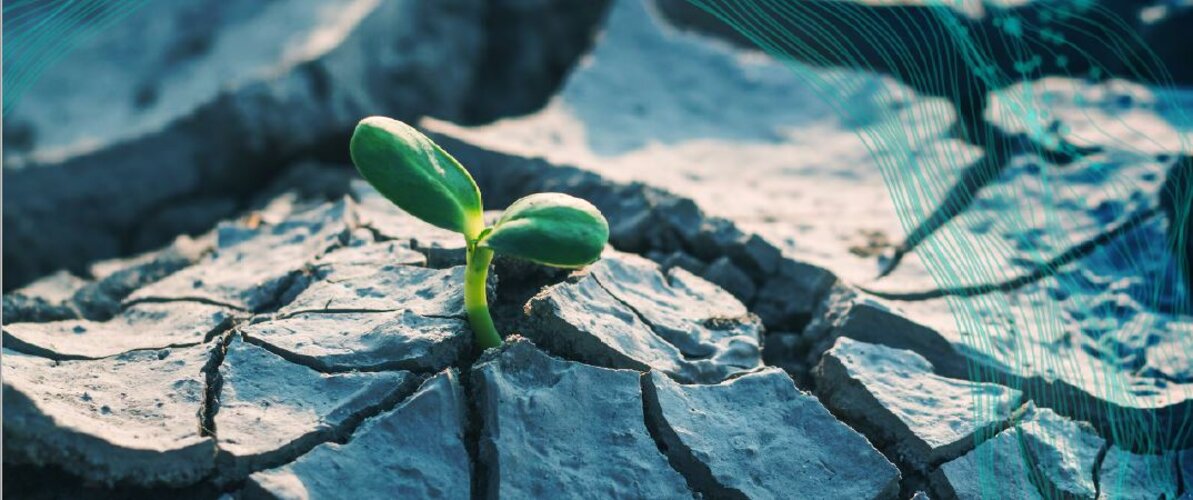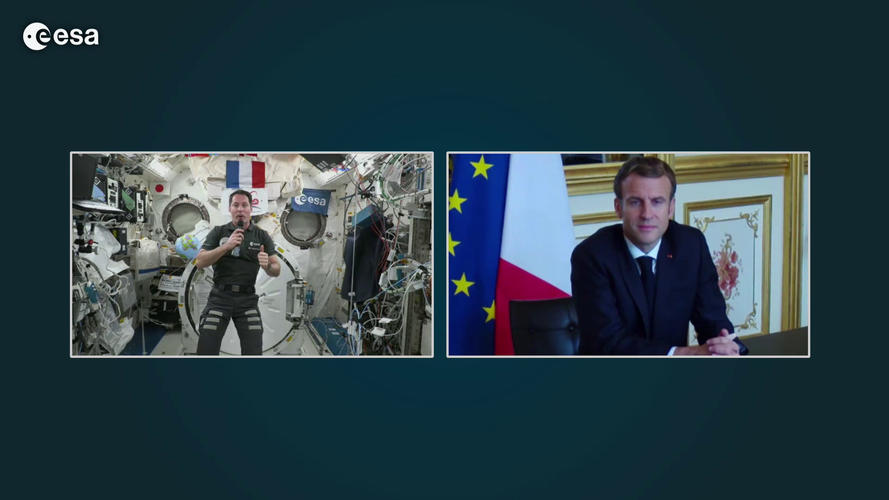
Copernical Team
Melt
 Video:
00:31:09
Video:
00:31:09
Glaciers across the globe have lost over nine trillion tonnes of ice in half a century. How will glaciers look over the coming decades? “It all depends on what humans are doing now in terms of greenhouse gas emissions:” this is the message one scientist delivered during an ESA-led expedition to the Gorner Glacier in Switzerland – one of the biggest ice masses in the Alps.
As world leaders gather for the 26th UN Climate Change Conference of Parties, watch the exclusive premiere of the documentary that follows ESA astronaut Luca Parmitano, along with a team of glaciologists
Mind the stars
 Image:
Image:
Space can be a cruel mistress, but she is a beautiful one.
As we await the launch of ESA astronaut Matthias Maurer and the return of Thomas Pesquet, let us marvel at the fact that humans live and work in space, an environment so inhospitable to us.
As Thomas nears the end of his six-month mission Alpha on the Space Station, he took this image, noting that living on the International Space Station “really feels like flying on a spaceship into the cosmos… or wait… that’s what we do.”
While astronauts are often pointing their cameras down to Earth, Thomas looked
Video: Best of Alpha mission timelapse

A collection of the best timelapse videos made during ESA astronaut Thomas Pesquet's second mission to the International Space Station, "Alpha" in 2021. The camera is setup to take pictures at intervals of two a second, and the pictures are then edited into this video that plays at 25 pictures a second. Most videos around 12 times faster than real speed.
Thomas shared this video on social media with the caption:
"Probably the last the timelapse from space, and fittingly here is a special edition "best of" montage: aurora, lightning, spacewalks, day views and spacecraft reentry in less than five minutes. Get comfy, cast it to your largest screen in the house and enjoy!"
Over 200 experiments are planned during Thomas' time in space, with 40 European ones and 12 new experiments led by the French space agency CNES.
Explore further
Explore ESA’s interactive Climate Change Kit

Arguably, humankind has never been more aware of the jeopardy we and the planet face because of climate change. As world leaders at COP26 work to accelerate action towards reducing greenhouse gas emissions to keep the goal of 1.5°C temperature rise within reach, we bring you a new easy-to-use guide on what ESA is doing to understand and monitor climate change from space – data that are essential for policy-makers.
Space Station call with French President Emmanuel Macron
 Video:
00:20:53
Video:
00:20:53
ESA astronaut Thomas Pesquet had a call with the French President Emmanuel Macron on 4 November 2021 from the International Space Station. The call came at the end of Thomas’s second mission to space called Alpha.
Over 200 experiments are planned during Thomas’ time in space, with 40 European ones and 12 new experiments led by the French space agency CNES.
Latest updates on the Alpha mission can be found via @esaspaceflight on Twitter, with more details on ESA’s exploration blog via thomaspesquet.esa.int.
Background information on the Alpha mission is available at www.esa.int/MissionAlpha with a brochure at www.esa.int/AlphaBrochure.
Small but Mighty NASA Weather Instruments Prepare for Launch
 Working together, two instruments could open the door for a more efficient, cost-effective way to gather key information for weather forecasting. Two instruments launching to the International Space Station in a few weeks could be weather-forecasting game changers. The two novel instruments are expected to demonstrate that while they are much smaller, much lighter, and much less expensive than w
Working together, two instruments could open the door for a more efficient, cost-effective way to gather key information for weather forecasting. Two instruments launching to the International Space Station in a few weeks could be weather-forecasting game changers. The two novel instruments are expected to demonstrate that while they are much smaller, much lighter, and much less expensive than w New look for ground-breaking UK-led ESA mission to detect climate change
 TRUTHS, which stands for Traceable Radiometry Underpinning Terrestrial- and Helio- Studies, will provide a gold standard reference for satellites observing the Earth, Moon and Sun.
Conceived by the UK's National Physical Laboratory (NPL) and funded by the UK Space Agency, TRUTHS is being developed by the European Space Agency (ESA). The satellite will be built by the UK space industry led
TRUTHS, which stands for Traceable Radiometry Underpinning Terrestrial- and Helio- Studies, will provide a gold standard reference for satellites observing the Earth, Moon and Sun.
Conceived by the UK's National Physical Laboratory (NPL) and funded by the UK Space Agency, TRUTHS is being developed by the European Space Agency (ESA). The satellite will be built by the UK space industry led On ancient Earth, it never rained but it poured
 Today, we are experiencing the dramatic impacts that even a small increase in global temperatures can have on a planet's climate. Now, imagine an Earth 20 to 30 degrees Fahrenheit hotter than today. Earth likely experienced these temperatures at various times in the distant past and will experience them again hundreds of millions of years from now as the sun continues to brighten.
Little i
Today, we are experiencing the dramatic impacts that even a small increase in global temperatures can have on a planet's climate. Now, imagine an Earth 20 to 30 degrees Fahrenheit hotter than today. Earth likely experienced these temperatures at various times in the distant past and will experience them again hundreds of millions of years from now as the sun continues to brighten.
Little i Better hurricane forecasts with infrared satellite measurements of cloudy skies
 Weather forecast models have long struggled to integrate satellite observations of infrared radiation in cloudy regions of the sky. But in recent years, some satellite data providers have developed new techniques to integrate such data. A group of researchers from China, Japan, the US and the UK have performed a survey of best practice for the observation and use of this data, demonstrating sign
Weather forecast models have long struggled to integrate satellite observations of infrared radiation in cloudy regions of the sky. But in recent years, some satellite data providers have developed new techniques to integrate such data. A group of researchers from China, Japan, the US and the UK have performed a survey of best practice for the observation and use of this data, demonstrating sign China launches remote-sensing satellite group
 China launched a group of remote-sensing satellites from the Jiuquan Satellite Launch Center in northwest China on Wednesday.
The second group of the Yaogan-32 satellite family was launched by a Long March-2C rocket with an attached upper stage at 3:43 p.m. (Beijing Time) and entered the planned orbit.
This was the 394th mission of the Long March rocket series.
span class="BDL
China launched a group of remote-sensing satellites from the Jiuquan Satellite Launch Center in northwest China on Wednesday.
The second group of the Yaogan-32 satellite family was launched by a Long March-2C rocket with an attached upper stage at 3:43 p.m. (Beijing Time) and entered the planned orbit.
This was the 394th mission of the Long March rocket series.
span class="BDL 
